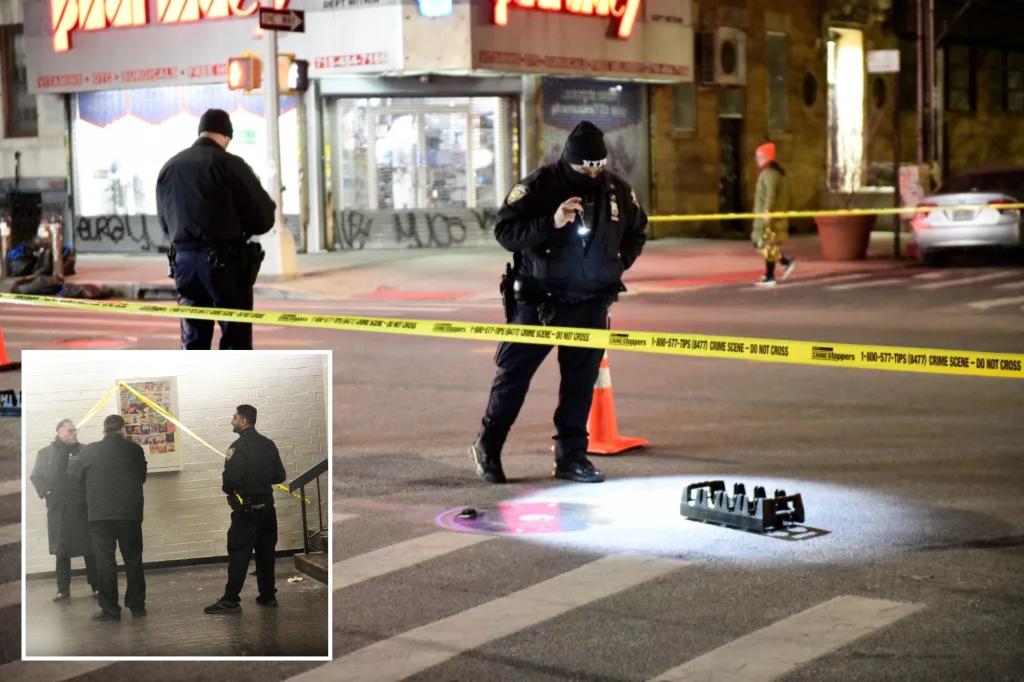Paragraph 1: A Sudden Burst of Violence
On a seemingly ordinary Tuesday evening, the tranquility of a Brooklyn street was shattered by the sudden eruption of gunfire. Alia Abdul-Raheem, a 32-year-old resident of Bedford-Stuyvesant, was walking home from work along Malcolm X Boulevard around 7 p.m. when the terrifying incident unfolded. As she strolled along, the distinct sound of gunshots pierced the air, jolting her from her peaceful reverie. A car sped past, its windows down, and Abdul-Raheem instinctively realized that the shots were emanating from the vehicle. In a split second, her life took an unexpected and traumatic turn.
Paragraph 2: The Shocking Impact
Immediately after the car raced by, Abdul-Raheem felt a sharp, sudden impact on her chest. Looking down, she discovered a hole in her coat and shirt, a chilling testament to the bullet that had grazed her. Despite the shock and pain, Abdul-Raheem’s initial reaction was one of disbelief and a strange absence of blood. Driven by adrenaline and a desire to reach the safety of her home, she continued her walk, the gravity of the situation yet to fully sink in. The suddenness of the attack and the surreal nature of the experience left her in a state of stunned confusion.
Paragraph 3: Realization and Medical Attention
Upon reaching home, the reality of her injury became starkly apparent. Her sister, opening Abdul-Raheem’s coat, revealed the gash and wounds on her chest. The sight of the injury brought the severity of the situation into sharp focus, prompting immediate action. Abdul-Raheem was rushed to New York Presbyterian’s emergency room, where medical staff swiftly assessed her condition. Doctors examined the wound, performed an X-ray, and determined that, miraculously, the bullet had not penetrated her chest. Classified as a graze wound, the injury, while painful and traumatic, could have been far worse. Abdul-Raheem’s relief was palpable, tempered by the lingering shock of the near-fatal experience.
Paragraph 4: A Community Shaken, A Life Disrupted
The incident left Abdul-Raheem physically sore and emotionally shaken. A resident of the neighborhood for eight years, she had always felt safe in her community. The unexpected violence shattered her sense of security, casting a shadow of fear over her familiar surroundings. The prospect of her daily commute, once a mundane routine, now filled her with apprehension. The shooting also highlighted a broader issue of gun violence plaguing the city. Abdul-Raheem’s experience became a stark reminder of the vulnerability of innocent bystanders caught in the crossfire of senseless acts.
Paragraph 5: Another Victim, A Shared Trauma
The drive-by shooting had another victim: a 15-year-old boy who was shot in the left ankle on Chauncey Street near Malcolm X Boulevard. Police believe the teenager was the intended target of the attack. He was rushed to the hospital in stable condition, physically injured but fortunate to have survived. The two victims, connected by a shared trauma, became symbols of the indiscriminate nature of gun violence. Abdul-Raheem, a law-abiding citizen simply walking home from work, and a 15-year-old boy, caught in circumstances beyond their control, both became victims of a single act of violence.
Paragraph 6: A Call for Change, A Plea for Safety
The incident fueled Abdul-Raheem’s call for stricter gun control measures. The fact that a 15-year-old had access to a firearm deeply disturbed her. She questioned the ease with which young people obtain guns and lamented the devastating consequences. The shooting, occurring at 7 p.m. on a Tuesday evening, underscored the pervasiveness of gun violence and its potential to disrupt the lives of ordinary citizens at any time. Abdul-Raheem’s plea for change resonated with many who shared her concerns about the safety of their communities. As the police investigation continued, the search for the perpetrators remained ongoing, and the incident served as a stark reminder of the ongoing struggle to address gun violence in urban communities.

